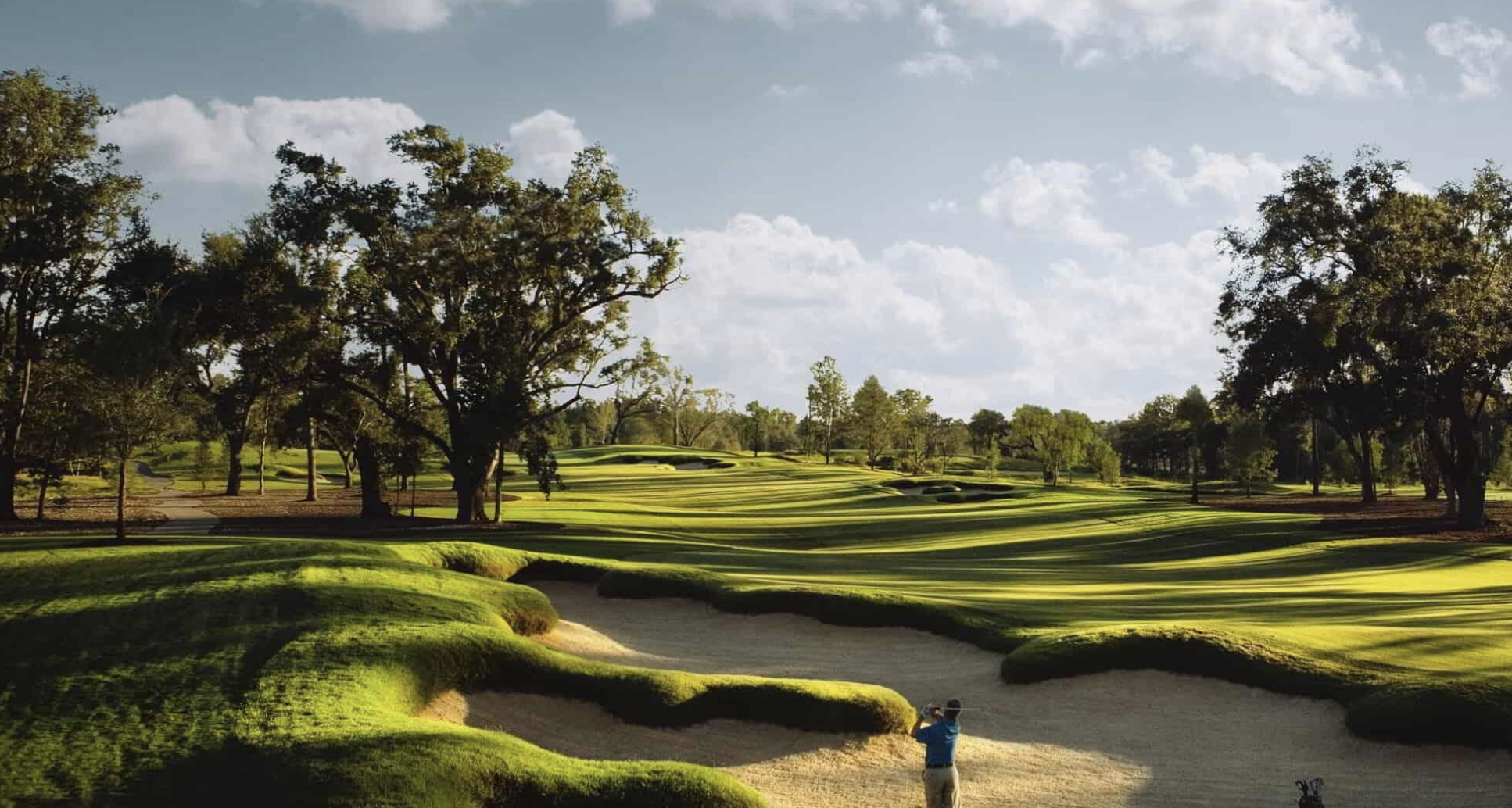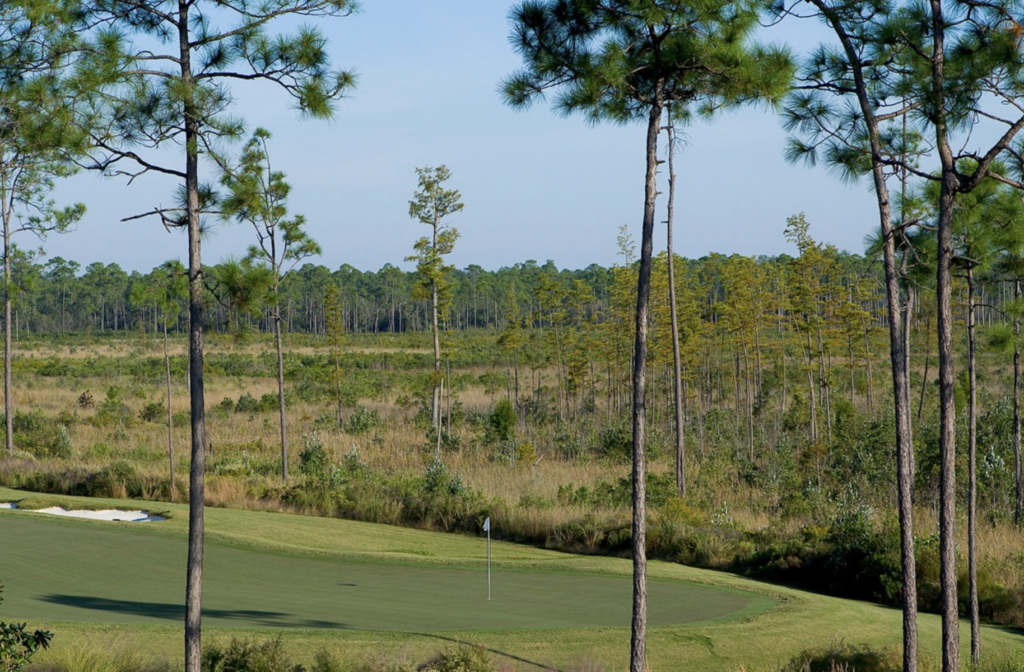
Fallen Oak
One of the nation’s underrated golf and gaming destinations is the Mississippi’s Gulf Coast, the area in and around the city of Biloxi.
For years the region — which is about two hours east of New Orleans and half that from Mobile, Alabama — was famous for its sandy beaches and calm waters perfect for jet skiing or deep-sea fishing but that was augmented at the turn of the 21st century by casino gambling, which has been a boon.
If there’s casino gambling, great golf is never far behind so if you’re planning a visit to Mississippi’s world-class coastal casinos bring along your clubs and get ready to be challenged. Many of our area’s top resorts boast affiliated courses designed by the likes of Jack Nicklaus, Arnold Palmer, Tom Fazio, and other celebrated designers.
Add in the region’s rich and flavorful Southern cooking, tremendous value both on the courses and at the opulent hotels and year-round shorts and short-sleeves climate and Biloxi belongs on your list of great golf destinations of the South.
There are about 20 courses in the area at just about every price point. We have chosen three of our favorites for the snapshot below — the sublime Fallen Oak designed by Tom Fazio; the very good and testing Jerry Pate-fashioned Preserve Golf Club; and the uber-secluded Grand Bear Golf Club as routed by Nicklaus.
Fazio hit the jackpot with Fallen Oak
No discourse about golf in this region can begin without profiling Fallen Oak, the peerless course available only to guests staying at the Beau Rivage MGM resort in Biloxi.
Fallen Oak, located in Saucier, is often compared with Shadow Creek, Fazio’s other casino-course gem in Las Vegas, for its layout, his huge features, its playability and its exclusivity, and the two could be considered interchangeable as the nation’s top casino golf facility.
Fallen Oak opened in 2006 and for a decade it hosted the PGA Tour Champions event in Mississippi. The par-72 layout can be stretched beyond 7,500 yards, but from the proper tees it’s a treat of attempted shotmaking into smooth greens and testing surrounds. There’s not a thoughtless shot on the entire 510-acre property, and at the same time there’s no crazy demands or quirky holes.
During construction many large specimen trees were relocated to help define the course’s corridors and more than a hundred acres of turf was laid. Better than half a million cubic yards of earth was moved to forge the dramatic elevation changes on the property.
Unlike the heavily manufactured Shadow Creek, Fallen Oak sits on a tremendous Southern site that seems entirely natural for golf and offers restrained bunkering, as the ground moves enough through the wide corridors to provide challenge without every stray shot splashing into sand.
Around the expansive putting surfaces are plenty of roll outs and closely mown areas and those golfers that take on difficult pin locations and/or are just a little bit wayward with their approach shots can expect to face demanding chips and pitches. Per any really great course, play to the center of the massive greens and rely on your putting.
Fallen Oak has consistently ranked as the best course in Mississippi by Golf Digest and Golfweek magazines and makes a public-access player feel like a member of an elite club. A busy day at this place is 40 players, and you’re likely never to see another group outside your own.

The Preserve
The Preserve Golf Club is aptly named
If there is an area course mentioned in the breath as Fallen Oak, it’s The Preserve Golf Club in Vancleave. Here, on a priority less than half what Fazio had to work with, Pate routed a track that rolls past several large ponds and sports fairly wide corridors lined by stately oaks and ends at tricky green complexes. There’s generally room to bail out from numerous water hazards, and the layout’s shaping is interesting without ever being overbearing.
The 245-acre property is surrounded by an 1,800-acre nature preserve, further enhancing its great sense of isolation. The Preserve is bordered by, but doesn’t bring into play, the meandering waters of the Fort Bayou Creek, and that’s okay — there is plenty to think about when teeing it up at this 6,774-yard gem.
Pate always designs thoughtful and feature-filled courses and The Preserve fills that bill and then some. Expect to play through and over pitcher plant bogs, cypress swamps, longleaf pines, live oak groves, and native prairie grasses when you tee it up.
This part of Mississippi is rather flat and The Preserve likely has the flattest property you will play from tee to green in the area. Pate makes up for that with forced carries over wetlands and bogs and contoured greens and tight surrounds, requiring quality ball-striking throughout the round.
The best stretch at the par-71 Preserve might be holes 11 and 12, both short par 4s that call for course management and thought to set up the best angles into each green. Bold and accurate players can attack both greens off the tee. The 225-yard par-3 16th is considered by many to be the toughest hole here but the longish par-4 ninth and 18th (at 442 and 462 yards, respectively) are also formidable tests.
The Preserve Golf Club is owned and operated by the Palace Casino Resort and is ranked on every Best of Mississippi list. It is among the must-play courses in the area.
Isolation is the word at Nicklaus’ Grand Bear Golf Club
An overhead view of Grand Bear Golf Club, a 7,204-yard Nicklaus design routed through 650 acres of the dense De Soto National Forest, shows slivers of fairway among pine trees so dense that light can’t even get through some of the stands. When driving to the course, golfers take a winding six-mile road that will have you wondering if you’ve taken a wrong turn.
The journey is worth the effort. Grand Bear Golf Club is likely the most isolated course you’ll ever play, with those pine trees that come into play on most holes and natural cypress wetlands also on the menu as the player moves towards championship-speed TifEagle greens protected by deep bunkers.
No two holes parallel another at Grand Bear (which opened in 1999) and the fairways were literally carved from the forest. The course is routed in two large loops with no two holes running parallel to one another. It’s an idyllic site, without roads or homes or anything else to distract golfers from their game of golf save for the plentiful wildlife and amazing flora.
The best holes on the front nine include: the fourth, a 371-yard par 4 that features a slightly elevated and heavily contoured green; the sixth, Grand Bear’s longest par 4 at 473 yards that is highlighted by a massive swale to the left and in front of the green, funneling misses a good 10-15 yards down the slope; and the seventh, a par-3 to a small and narrow green overlooking the river.
The back nine features a bit more excitement. The 13th, a 349-yard par-4 begins a delightful stretch that abuts the Big Biloxi River; it has a smallish and quirky putting surface with a slope that feeds balls off the back right edge.
The bunkerless 195-yard par-3 14th plays over an arm of the river to a huge green while the 15th is a reachable par 5 with a putting surface that extends onto a peninsula overlooking the river, The 433-yard 17th a Cape-like hole that forces aggressive players into a long carry over the river with the reward of a shorter approach.
Grand Bear Golf Club and more than 1,700 acres that surround it are now owned by VICI Properties Inc., the parent company of the Beau Rivage and the Harrah’s Gulf Coast in Biloxi. The course is consistently recognized as one of the top casino and resort courses in Mississippi.

